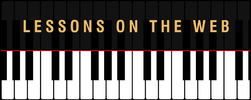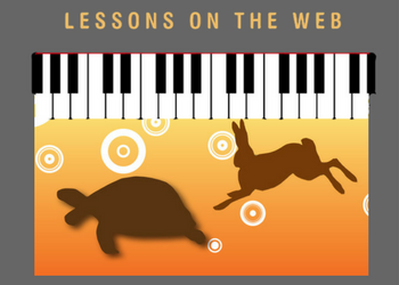|
Most of us...live in the fast lane. We have access to global communities in seconds. Instant communication with anyone we want to speak is the norm and the entire concept of "slowing down" may be heading for the Endangered Species List. In fact, if you're "slowing down" enough to read this blog, you're doing pretty good! When it comes to learning something new, we're also "getting it" faster than we used to. Part of this is because our brains are adapting to the dominance of technology and are getting rewired to process information faster than ever before. When it comes to learning the piano, this same principal applies; and this is where we have to step back a little bit and see if our "going fast" is actually slowing down our growth on the piano. Just as we have essentially learned to do everything in life faster, we can and need to learn when it is appropriate to slow down. In other words: we can't always "do fast" until we learn to "do slow". Take for example a scale that you are working on. Your goal is that you want to be able to play the scale with 16th notes at an Allegro Tempo. Most of us would not be able to do this the first time we try to, or the 2nd or 3rd. Our brains want to do it, but our body isn't ready yet. What happens when we try to play this scale fast and can't? Do we get frustrated? Defeated? Many of us do. So let's slow it down. Take that same scale and play it in quarter notes at a slow, comfortable tempo. Did you get frustrated that time? No....because you played it slowly enough that your body could work with your brain. Next, you want to play it a little bit faster. Make sure you use your metronome for this. Move up your tempo setting just one or 2 notches. Continue increasing your tempo a little bit each time you play your scale but...don't let yourself play it faster than you really can; meaning your fingers and brain are moving in sync with each other. Now that you're comfortable playing your scale in slow steady quarter notes, start feeling the pulse of 16th notes in each of those quarter beats. There are 4 in each quarter beat if we're playing 16th notes. Move the metronome back if you have to, to a slower tempo while feeling those 16th note beats. Remember...just because you're playing "fast" notes, doesn't mean you have to go at a "fast" tempo on the metronome! You can play 16th notes at any tempo...the key is to play 4 beats per quarter, or 4 notes per quarter. Now play your scale with 16th notes at that slow tempo. Do it several times. Let your fingers and brain work it out between themselves...they actually communicate with each other! Just as before, when you feel comfortable at the slower tempo, start moving up a notch or two each time until you are playing it faster with ease. See how slowing down helps you play faster...faster?? :) This applies to anything you're learning on the piano: scales, exercises, concertos, pieces, etc. The key here, is to acknowledge and understand that our outside lives demand us to respond to basically everything, faster! It's a bit of an invasion into our learning process. One of the great things about learning to play the piano, is that you get to experience first hand the benefits of something like this - slowing down to improve your piano playing. You can see the positive results that come from just moving back in tempo a few notches, so that our minds and fingers can connect and work together. This is such a life lesson. Practice "slowing down" in your life when you're feeling those same feelings of frustration or defeat. Put your mental metronome on Largo while you work out the details and then you can start moving faster again. As you see success in your piano playing from doing this, you will in other areas of your life too. Stay Tuned to PianoLessonsOnTheWeb to learn much more and achieve your dreams of playing the Piano! Leave a Reply. |
AuthorMost blogs written by Archives
June 2020
Categories
All
|


 RSS Feed
RSS Feed